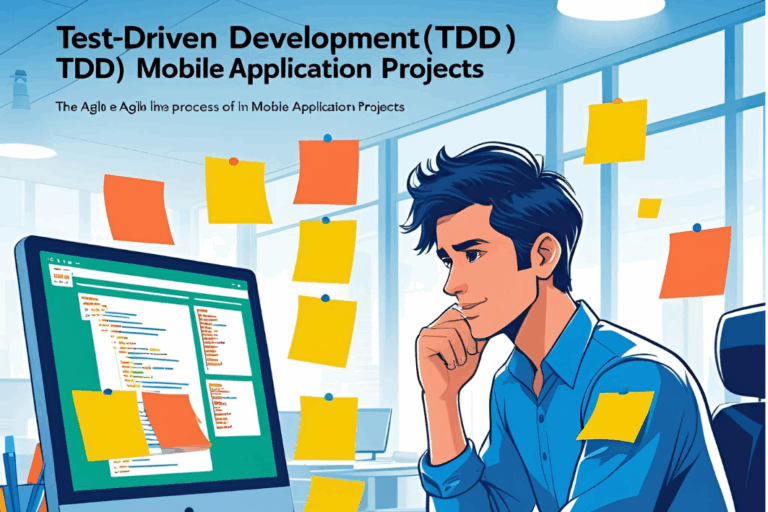Flutter vs. React Native: What to Choose for Scalable Cross-Platform Apps
In today’s fast-paced development landscape, choosing the right framework can determine whether your product scales smoothly or collapses under pressure. If you’re building for multiple platforms and aiming for performance, efficiency, and long-term maintainability, the Flutter vs. React Native debate becomes central to your decision-making process. At Techo Lab, we help tech-driven businesses navigate such decisions by aligning their tech stack with growth objectives.
Both frameworks offer the promise of cross-platform app development using a single codebase, but their approaches, ecosystem maturity, and scalability traits differ in meaningful ways. This blog unpacks the strengths, limitations, and scalability potential of Flutter and React Native so you can make an informed call.

1. Recognizing the Frameworks: React vs. Flutter Indigenous
Supported by Google, Flutter is a UI toolkit that creates natively built, aesthetically rich applications using the Dart language. It allows developers to fine-tune animations, rendering, and app performance, particularly in circumstances with a lot of GPU usage.
Meta (Facebook) supports React Native, which uses JavaScript and a bridge to native APIs. Although it has a larger developer community and enables faster development iterations, performance-heavy applications may find its dependence on the bridge to be a bottleneck.
The trade-offs between native performance, developer productivity, community support, and user interface customization must be considered when contrasting Flutter vs React Native.
2. Scalability in Projects in the Real World
Scalability encompasses more than simply an application’s user capacity; it also includes the code’s maintainability, the speed at which new features may be added, and the application’s performance under load.
- In large-scale applications where rendering speed and UI consistency are crucial, Flutter performance typically excels. Flutter has been used by apps like Alibaba and BMW because of its reliable cross-platform performance.
- Respond Apps like Instagram and Facebook Ads Manager, where code reuse and quick feature rollout are essential, exhibit native scalability. However, problems with native bridge performance could surface as apps get bigger.
For startups and businesses looking to create scalable mobile apps with unique user interfaces and broad device compatibility, Techo Lab frequently suggests Flutter. React Native works well in situations where developer availability and time-to-market are crucial considerations.
3. Tooling and the Developer Ecosystem
Third-party library availability and ecosystem maturity are important considerations when assessing cross-platform app development tools.
- The community on React Native is bigger and more experienced.
- Despite being more recent, Flutter is expanding quickly, and JavaScript developers may switch with ease thanks to the abundance of libraries for everything from state management to navigation.
There may be fewer surprises at runtime because of its more consistent and standardized tooling with Dart and the Flutter SDK.
In our experience at Techo Lab, robust documentation, widget libraries, and hot reload have all contributed to a steady increase in developer productivity with Flutter. Although React Native continues to provide more third-party connectors, frequent library upgrades and deprecations can make it more difficult to ensure long-term code stability.
4. Which One Is Better for 2025 and Later?
Consider more than just the initial creation of your app when you plan it for the next three to five years. Inquire: • Will this tech stack allow my team to grow easily?
- Is the framework able to manage demands for performance and quick feature updates?
- Will UI and UX remain the same across all platforms?
Here is our condensed perspective:
If you need a rich user interface for your app, desire consistent performance on both iOS and Android, and are considering long-term scalability, go with Flutter.
Select React Native.: If you’re working on an MVP with a short deadline and your team is already using JavaScript/TypeScript, you want to prototype quickly.
Before suggesting a tech stack, we at Techo Lab evaluate your team’s capabilities, performance objectives, and product plan. The important thing is to match the strengths of the framework with your business objectives, regardless of whether you choose React Native or Flutter.
Concluding remarks
There is no one-size-fits-all solution when choosing between Flutter and React Native. It’s a calculated decision that affects hiring, scalability, performance, and development pace. Although both frameworks are strong, your app will stand out in a crowded market if you select the one that best suits your scalability objectives.
Looking to build a scalable cross-platform product? Techo Lab helps startups and enterprises engineer future-ready mobile solutions that grow with your users.





